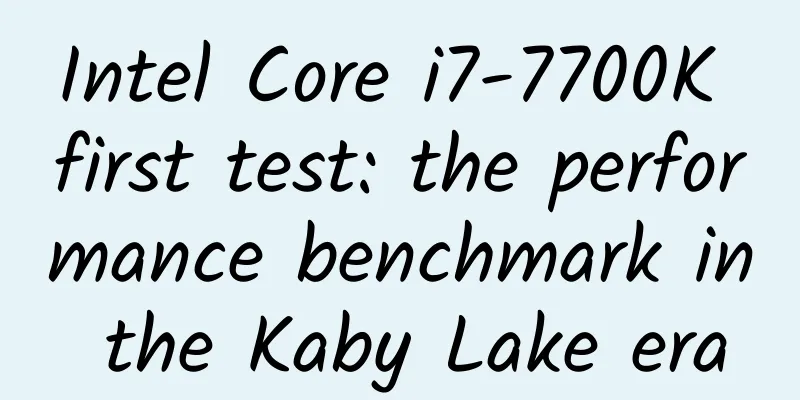Tesla has achieved Level 5 autonomous driving, but are humans really ready?

|
Tesla recently released the Autopilot 2.0 system with "full self-driving capabilities", and this system can cover almost all Tesla models. However, after the self-driving technology has just caused a number of fatal accidents, has the current Autopilot 2.0 system reached the level of five self-driving capabilities? And should people continue to have confidence in this new technology? Tesla has achieved Level 5 autonomous driving Tesla founder Elon Musk recently announced that all new Tesla cars will be equipped with the hardware system Autopilot 2.0 with "full self-driving capabilities" in the future. According to Tesla's official website, this self-driving hardware Autopilot 2.0 will be applicable to all Tesla models, including the latest Model 3, and the Model S and Model X equipped with this new hardware are already in production. Of course, this Autopilot 2.0 will not be available immediately. Even if you buy a new Model X now, you can't fully use the automatic driving mode for the time being, because Tesla said it still needs to "calibrate this new system by driving millions of miles in the real world." It is reported that this new system will include 8 cameras to cover a 360-degree visual range, and the monitoring distance of the surrounding environment can reach up to 250 meters. The 12 ultrasonic sensors equipped on the vehicle complete the visual system, and the distance of detecting and sensing soft and hard objects is twice that of the previous generation system. The new enhanced front radar can provide richer data around it through redundant wavelengths, and the radar waves can also pass through heavy rain, fog, dust, and even detect vehicles in front. Musk said the new hardware will be fully capable of supporting Level 5 autonomous driving, meaning the car can completely "drive itself." At the same time, Musk also released a video that showed us the powerful function of the so-called "Autopilot 2.0" for the first time. The video shows that a Model X first drove out of the parking lot automatically, picked up the driver (the United States requires all self-driving cars to be equipped with a human driver ready to take over the vehicle at any time) and started driving on public roads including intersections and highways. Finally, the car returned to the parking lot and dropped off the driver, then automatically found a parking space to complete parking. It should be said that it is surprising that a vehicle without any strange devices around the body can have fully autonomous driving capabilities. After all, at this stage, Google's self-driving car still needs to be equipped with many radars and sensors on the roof, and such technical configuration and appearance are obviously not suitable for civilian use. Musk even said: "When a Tesla vehicle is looking for a parking space, it will also confirm whether parking is allowed here, so Tesla will automatically avoid those disabled parking spaces." Automated driving classification standards As we all know, there is a strict grading standard for autonomous driving technology internationally, and the U.S. Department of Transportation has chosen the evaluation standard given by the Society of Automotive Engineers, the main contents of which are: Level 0: No autonomous driving, the human driver has full control of the car, which can be assisted by warning or intervention systems; Level 1: Driving assistance, which provides driving support for one of the following operations: steering and acceleration/deceleration. All other driving actions are performed by human drivers. Level 2: Partial automation, which provides driving support for multiple operations such as steering and acceleration and deceleration through the driving environment. Other driving actions are performed by human drivers. Level 3: Conditional Automation, where the autonomous driving system performs all driving operations. The human driver needs to provide responses at appropriate times according to the system requirements. Level 4: Highly automated, all driving operations are completed by the autonomous driving system. Depending on the system requirements, the human driver does not necessarily need to respond to all system requests, including limited road and environmental conditions. Level 5: Full automation, where the autonomous driving system can independently complete all driving operations under all road and environmental conditions that human drivers can handle. At present, existing automobile and Internet manufacturers are mostly concentrated on level two or level three in terms of autonomous driving technology, including Tesla's previous generation Autopilot system that caused several autonomous driving accidents not long ago. Therefore, Tesla's announcement that the Autopilot 2.0 system has jumped directly from Level 3 to Level 5 autonomous driving is still a bit worrying. But Musk still believes that the autonomous driving system is actually much safer than people think. Although the media has been promoting the statement that "autopilot killed people" after the accident, Musk believes that this statement completely ignores the reality that 1.2 million car accidents are caused by "manual driving" every year. Limitations of Tesla’s test videos Judging from the content of the video released by Musk, we actually did not see any overly challenging road conditions encountered by autonomous driving. The road test video he released can even be said to be carried out in the best locations in California. For example, the weather conditions in the video are very suitable, the road is flat, the road markings are clearly visible, and there are no obstacles blocking the road. The highway entrance and exit signs are also very clear. Judging from the road conditions in the video, this road test was most likely carried out in Palo Alto, but the actual road conditions in many other parts of the United States are not so ideal. In actual driving, we are likely to encounter many problems such as damaged pavement, potholes on the ground, blurred road markings, unclear markings, and bad weather, but the video released by Tesla did not show how its latest autonomous driving system will handle such road conditions. Judging from the actual experience of foreign media, at least the first generation of Autopilot cannot perfectly handle this kind of road conditions. For example, when the highway road surface cannot be clearly identified by the system due to rain, the system will ask the driver to take over the driving immediately. Although Tesla has made it clear that it still needs to "calibrate this new system by driving millions of miles in the real world," it is clear that there is still a long way to go before we can actually see a large number of self-driving cars driving on public roads. Tesla's Adventure Compared with many established American car manufacturers, Tesla can only be regarded as a young latecomer, but the company's investment in autonomous driving technology and the achievements it has made are enough to surpass any manufacturer. Take Google for example. Although Google has also invested huge resources in the field of autonomous driving, since the company is just a technology company, it can only rely on other manufacturers to promote autonomous driving technology to a large extent. It also lacks an OTA system upgrade mechanism like Tesla. Of course, more importantly, Tesla is more adventurous than traditional car companies or other Silicon Valley technology companies. Mike Ramsey, research director at Gartner, a U.S. consulting firm, said: "Tesla has no problem launching its products before they are fully finished, but this is something that Google, GM and other manufacturers are reluctant to do. They believe that products can only be launched on the market when they reach the 'perfect' standard." Fei-Fei Li, director of the AI Research Lab at Stanford University and a Chinese-American professor, believes that Tesla's move to be the first to equip its models with autonomous driving system hardware is a strategic plan with an eye to the future. “The race for autonomous driving technology has begun, but it will probably take quite a while to finish the race.” It should be noted that Tesla does not enable Lidar laser radar solutions in its models, which is considered by many other manufacturers as a necessary configuration for autonomous driving technology. However, many people do not realize the high cost of Lidar laser radar. The cost of some high-end Lidar laser radars is as high as $700,000, which is even more than the price of a Tesla. Tesla has effectively controlled vehicle costs by not having Lidar laser radar, and the price of its new autopilot function package is well controlled at $8,000. But the negative side is that the reliability of Tesla's autopilot system in some cases may not be as good as that of models equipped with Lidar laser radar. The recent car accident of Tesla owner Joshua Brown may be the best example. "What they are doing is risky, but it is also revolutionary enough for the automotive industry," said Fei-Fei Li. It should be said that Tesla's adventurous entrepreneurial spirit directly led to its separation from its long-term partner Mobileye. Mobileye co-founder and CTO announced at a previous earnings conference: "EyeQ3 chip will be the last cooperation between Mobileye and Tesla. However, we will continue to support and maintain Tesla's existing autonomous driving product project Autopilot, including some recent major function upgrades, including anti-collision response optimization, automatic steering optimization, etc. But in terms of hardware, we will no longer have any updates for Tesla." In most people's opinion, the trigger for the breakup between Mobileye and Tesla was the fatal incident caused by Tesla's Autopilot system in May this year. Mobileye and Tesla have different views on this serious accident. Mobileye believes that their product functions are limited, and it was Tesla's radical permission opening and publicity that caused car owners to use it beyond the functional limit, while Tesla emphasized that the cause of the accident was mainly due to recognition errors of cameras and radars. But what is certain is that if Tesla's somewhat radical technology advancement strategy ultimately proves to be successful, then the doubts about the company will soon disappear. "If this approach works, then everyone will follow suit. They have to do it, otherwise they will be eliminated from the market," Ramsey concluded. As a winner of Toutiao's Qingyun Plan and Baijiahao's Bai+ Plan, the 2019 Baidu Digital Author of the Year, the Baijiahao's Most Popular Author in the Technology Field, the 2019 Sogou Technology and Culture Author, and the 2021 Baijiahao Quarterly Influential Creator, he has won many awards, including the 2013 Sohu Best Industry Media Person, the 2015 China New Media Entrepreneurship Competition Beijing Third Place, the 2015 Guangmang Experience Award, the 2015 China New Media Entrepreneurship Competition Finals Third Place, and the 2018 Baidu Dynamic Annual Powerful Celebrity. |
<<: Is it really possible for electronic cameras to replace rearview mirrors?
>>: The secret of hybrid fuel saving: in-depth technical interpretation of eCVT transmission
Recommend
How to quickly increase the popularity of your live streaming room?
Live streaming has become a standard sales method...
How come the woodpecker doesn't get a concussion after pecking 12,000 times a day?
Recently, Woodpecker has become popular on the so...
What SEO solutions can corporate websites refer to? Attached is a case study of SEO solutions
The difference between a general and a soldier is...
Spring Responsive Programming Practice
Spring responsive programming practical resources...
If you gain weight after work, it’s not your fault! You work too hard.
Planning and production Source: A Brief History E...
If Lexus is now produced domestically, how much stage can Chinese consumers give it to perform?
Perhaps in today's society, it has become a j...
Global supercomputer competition: Europe's most powerful computer performance is only 2.5% of China's
Supercomputers have become one of the hottest area...
Observation on content products of e-commerce operation platform!
With the rise of short video platforms, the trend...
What is the best way to generate organic traffic on Tik Tok?
Nowadays, everyone on Douyin will try to get traf...
There are 13 ways to play activities in the 2020 event planning plan
In 2020, will you continue with last year’s old r...
The good opportunity to travel through time has come again! Jupiter will be in opposition to the Sun at 3 a.m. tomorrow. If you miss it, you will have to wait until 2129, more than a hundred years later.
Hurry and pack your bags, because the sky is abou...
Operational analysis: Lian Coffee’s “online takeaway + social fission”!
Even the fission of coffee makes me panic. Not lo...
A new strain of Omicron has been detected in India and Singapore. Can we still take off our masks?
The immune barrier of the population has been str...
A crystal composed entirely of electrons? This prediction was made 90 years ago, and it really happened this time.
A new exotic substance once again proves the magi...









